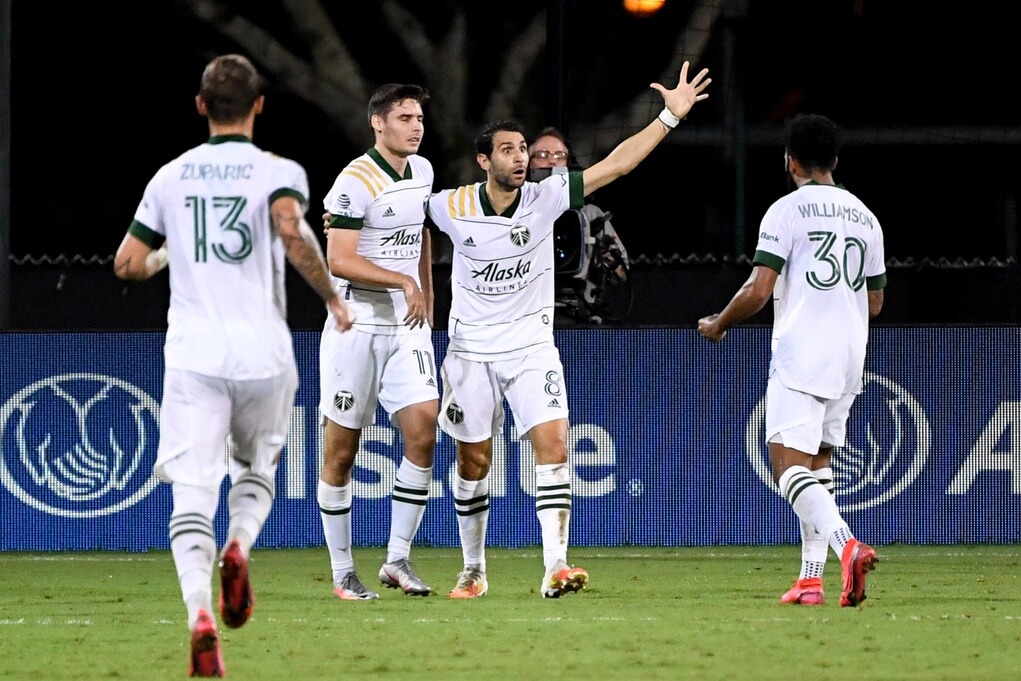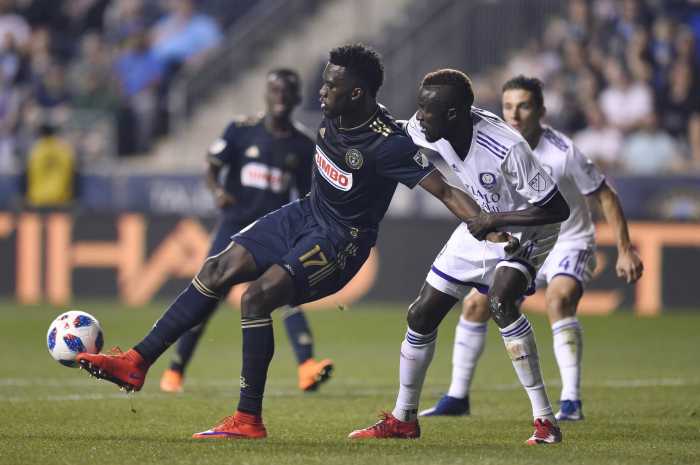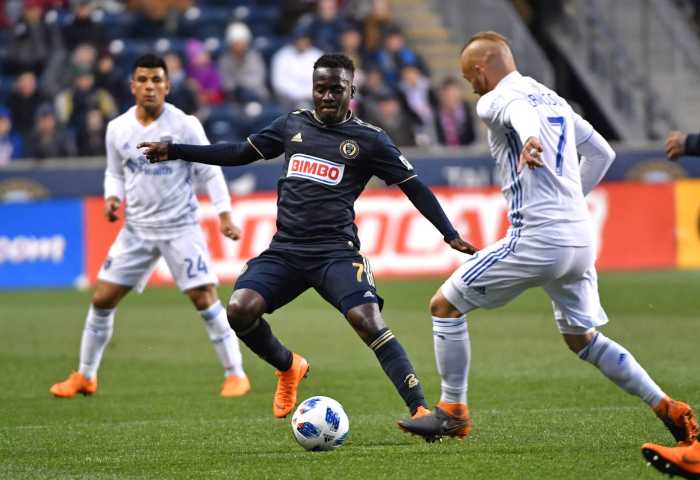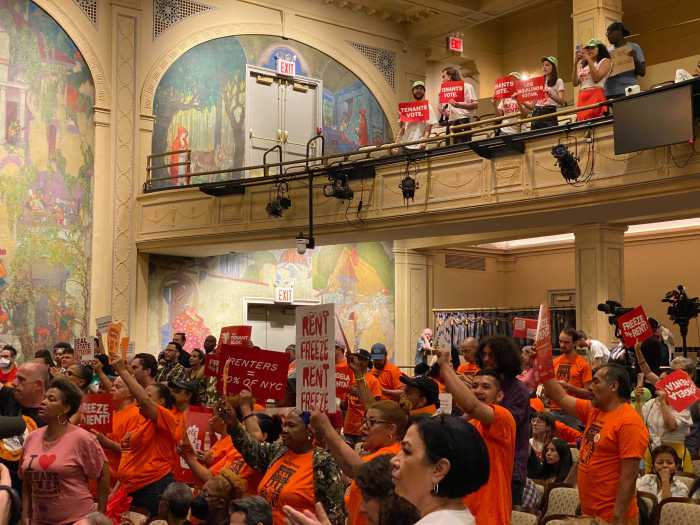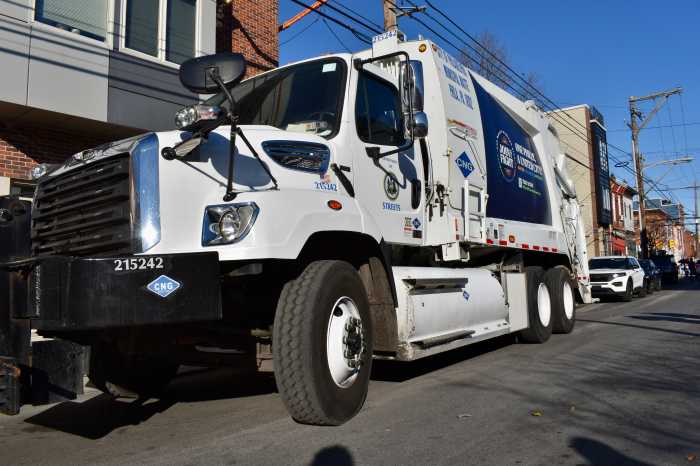Having reached the semi-finals of the one-off MLS Is Back Tournament, the Philadelphia Union stand on the precipice of making history with their first-ever piece of silverware, having impressively dismantled Sporting Kansas City in the previous round. Standing between Union and the final are the equally impressive Portland Timbers, so what better time to take a look at how they play under their coach, former New York Cosmos man Giovanni Savarese?
At the end of the 2017 season, Portland parted ways with their 2015 MLS Cup-winning coach Caleb Porter after 4 years following an unsuccessful playoff campaign. He was to be replaced by Savarese, who had built an impressive Cosmos side in the NASL, which was narrowly beaten by the Union in their first run to the Open Cup final in 2014.
He impressed in his first season with the Cascadia franchise, taking them to the final of the MLS playoffs only to fall short at the hands of Atlanta United. Portland’s 2019 season was underwhelming however, 11th in the overall standings and bowing out in the first round of the playoffs. Their performance in the group stage of this tournament, and subsequent run to the semi-finals, has led to optimism that 2019 won’t be repeated this year.
How do they Defend?
The Timbers line up in a 4-2-3-1 formation, a commonly found formation in the modern game, favored for its flexibility and high numbers in the attacking third. The four players in defense are shielded by the veteran playmaker Diego Chara, and although the more dynamic Eryk Williamson is given license to get forward, he is also not averse to offering the defense protection if needed. The objective of the Timbers defense is clear: win the ball back quickly. Their aggressive pressing style means they tend to see plenty of the ball, but they also see plenty of the referee, as their 13.5 fouls per game during the 2019 regular season was the 2nd highest in the league, eclipsed only by NYCFC.
How do they Attack?
Right the way through the team, this Timbers side are comfortable keeping the ball. The two center-backs are both composed on the ball, preferring to play short passes amongst themselves. The full-backs, or Chara, who is the main outlet of the longer, defense-splitting passes Portland rely on to generate efforts on goal.
When they have the ball, Portland’s wide attackers, often Yimmi Chara on the right and Marvin Loria on the left, sit further narrow than a typical wide player and provide support for the attacking midfielder, usually the brilliant Sebastian Blanco, who drifts into space ahead of the ball to provide the team’s main attacking outlet.
The mercurial but aging Diego Valeri is often brought on from the bench to play the role Blanco normally plays to devastating effect, and Blanco is moved to the left, where he is every bit as effective.
The lone striker is usually either Jeremy Ebobisse or Jaroslaw Niezgoda, but their role is very similar, as they look to draw defenders out of position by dropping slightly deeper, allowing Blanco or Valeri to run into the space created and get a shot away, although the forwards, particularly Niezgoda, are not averse to getting on the end of through balls themselves. This is a side who like to wear the opposition down with lots of short passes, usually among the players in the attacking third who are positioned very centrally, but Williamson also joins in from a deeper position.
Timbers Strengths
In Diego Valeri and Sebastian Blanco, they have match-winning attacking players who can pick out devastating passes to teammates, and teams can often struggle to cope with the fluidity with which the attacking midfielders and forward movement. Their defense will not allow you to breathe as they hunt the ball in numbers.
Timbers Weaknesses
Due to their slightly kamikaze approach to defending, and tendency to build patiently leading to their players being dispossessed, they are somewhat vulnerable to being attacked on the counter. They can also sometimes lack width when going forward, and their passing can become labored and pedestrian against well-organized sides.
How can Union win?
The defense will need to be disciplined and not be drawn out of position by the tricky off-the-ball movement the Portland attackers use. Against a side who like to see a lot of the ball, chances may prove few and far between, so the likes of Sergio Santos and Kacper Pryzbylko will need to be as clinical in front of goal as they have been so far in the tournament. Having said this, if Union can exploit Portland’s vulnerability on the counter-attack, we could be in for a memorable night.
Mandatory Credit: Douglas DeFelice-USA TODAY Sports

